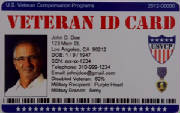|
|
|
HomeNDCOnline CoursesASVAB PracticeUSAF PDG TestsUSVCP StoreDischarge CertificatesVeteran Directory2016 Comp RatesSMC RatesEmergency Data CardVeteran ID CardLuggage ID CardDisabilitiesBusiness DirectoryVerify ServiceBenefits NewsComp QuestionsCompensation NewsHow to WinVet CentersVSO DatabaseVA Regional OfficesState BenefitsSVC CompensationCompensation FAQsAgent OrangePsych CompMST CompensationRare CompensationLocate War BuddyMedical RecordsStressor LettersFormsBrochuresFREE GuidesVideosPress ReleasesContact UsMembershipUpcoming EventsDiscountBizArchive RecordsHomeless AlertSubmit ArticleVSO of the YearClassifiedsAbout USVCP
|
VA Continues PTSD Outreach with AboutFace Campaign Veterans Provide Video Testimonials on Experiences with PTSD WASHINGTON (June 20, 2012) – In observance of June as PTSD Awareness
Month, the Department of Veterans Affairs National Center for Post-Traumatic Stress Disorder (PTSD) has begun a new online
initiative, AboutFace, focused on helping Veterans recognize PTSD symptoms and motivating them to seek treatment.
“We must
do all we can to help Veterans identify possible indicators that they may be suffering from PTSD,” said Secretary of
Veterans Affairs Eric K. Shinseki. “It requires a comprehensive, multi-faceted approach to be effective. We hope that
this initiative, while just one aspect of our program, will play an important role in that effort.”
The AboutFace campaign introduces viewers to Veterans from all eras who have experienced PTSD and
turned their lives around with treatment. Through personal videos, viewers will meet Veterans and hear how PTSD has affected
them and their loved ones. Visitors will also learn the steps to take to gain control of their lives.
AboutFace, which is PTSD specific, was designed as a complementary
campaign to VA’s current Make the Connection campaign. Make the Connection uses personal testimonials
to illustrate true stories of Veterans who faced life events, experiences, physical ailments, or psychological symptoms; reached
out for support; and found ways to overcome their challenges.
“VA is
committed to ensuring the men and women who bravely served our Nation can access the resources and services tailored for them
that can lead to a more fulfilling life,” said Dr. Robert Petzel, VA’s under secretary for health. “We want
Veterans to recognize themselves in these stories and to feel optimistic that they can overcome their challenges with proper
treatment. We set aside this month of June to urge everyone to increase awareness of PTSD so those in need can get effective
treatment that will enable them to lead productive, fulfilling and enjoyable lives.”
AboutFace launched in June in time to help bring attention
to PTSD Awareness Month. It is located on the National Center for PTSD website, www.ptsd.va.gov. There viewers will watch
as Veterans candidly describe how they knew they had PTSD; how PTSD affected the people they love; why they didn’t get
help right away; what finally caused them to seek treatment; what treatment is like and how treatment helps.
VA provides
effective PTSD treatment and conducts extensive research on PTSD, including prevention. Those interested in further information
can go to www.ptsd.va.gov to
find educational materials including courses for providers on the best practices in PTSD treatment and the award-winning VA/DoD
PTSD Coach Mobile App for electronic devices, which provides symptom management strategies.
These campaigns
are part of VA’s overall mental health program. Last year, VA provided quality, specialty mental health services to
1.3 million Veterans. Since 2009, VA has increased the mental health care budget by 39 percent. Since 2007, VA has seen a
35 percent increase in the number of Veterans receiving mental health services, and a 41 percent increase in mental health
staff.
In April, as
part of an ongoing review of mental health operations, Secretary Shinseki announced VA would add approximately 1,600 mental
health clinicians as well as nearly 300 support staff to its existing workforce of 20,590 to help meet the increased demand
for mental health services. The additional staff would include nurses, psychiatrists, psychologists and social workers.
For more information
on AboutFace, visit www.ptsd.va.gov/aboutface/
or contact the National Center for PTSD at (802) 296-5132.
# # # |
|
|
|
|
[ Benefits News ]
|
|

